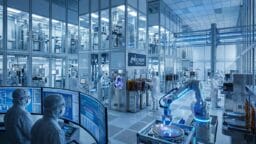Labor Market Dynamics Signal Underlying Weakness, Powell Warns
Federal Reserve Chair Jerome Powell painted an unsettling portrait of the labor market during a press conference following the Federal Open Market Committee (FOMC) meeting.
Although the unemployment rate stands at a seemingly robust 4.3% with consumer spending appearing solid, he emphasized that beneath this veneer, the market is losing momentum.
Once the statistical overcounting in payroll data is adjusted, Powell remarked, “job creation is nearly zero.”
The Fed Chair highlighted “a significant number of companies” that have recently declared layoffs or paused hiring, with many citing advancements in artificial intelligence (AI) as the driving force behind these decisions.
Frequently, they discuss AI and its transformative potential,” Powell shared with reporters after the Fed opted for a quarter-point interest rate cut to a range of 3.75%–4%.
He cautioned that major employers indicate they may not require additional staff in the foreseeable future. “We are monitoring this situation very closely, he stated.
These remarks coincide with the Fed’s interest rate reduction, which aims to mitigate “downside risks to employment” despite persistent inflationary pressures.
Powell noted that while the U.S. economy is still expanding at a “moderate pace,” hiring activity is waning, with consumer spending remaining a significant growth driver, particularly in sectors related to AI infrastructure such as data centers.
He countered the notion that the current surge in capital investment signifies a speculative bubble akin to the dot-com era, asserting “these companies have genuine earnings.” Powell remarked that these investments are less sensitive to interest rates, framing them as long-term commitments to enhancing productivity.
Simultaneously, Powell underscored the policy conundrum this economic boom presents for the Fed. While AI and automation enhance productivity, they enable firms to achieve more output with fewer employees, resulting in a more subdued labor market even as GDP remains positive.
“We face upside inflation risks alongside downside employment risks,” he noted. “This poses a substantial challenge for a central bank, as one scenario beckons for lower rates while the other demands a higher rate environment.”
A Bifurcated Economy
Recent corporate decisions echo Powell’s forewarning. This week, Amazon announced the layoff of 14,000 middle managers—approximately 4% of its white-collar workforce—in an effort to “streamline organizational layers.”
This workforce reduction occurs amidst the company’s aggressive investments in AI technologies. Subsequently, firms like Target and Paramount have implemented their own layoffs.
According to data from Challenger, Gray & Christmas, U.S. employers have revealed nearly 946,000 layoffs so far this year—the highest total since 2020—with more than 17,000 directly linked to AI, and an additional 20,000 attributed to automation.
“Job creation is exceedingly low, and the job-finding rate for the unemployed is similarly dismal,” Powell observed.
The situation has prompted economists to coin the term “the Great Freeze” to delineate the challenging labor market landscape.
With unemployment rates among recent college graduates surpassing 5% and the impending threat of AI automation on entry-level positions, numerous Gen Z individuals are opting for graduate school as a strategic delay.
This incongruity—robust investment juxtaposed with tepid hiring—has become central to the Fed’s policy deliberations.
Powell remarked that the economy increasingly resembles a K-shaped trajectory, benefiting higher-income households and large corporations through stock market gains and AI-driven productivity, while lower-income consumers restrain spending due to mounting costs.

He cited anecdotal evidence from prominent retailers and consumer services alluding to a “bifurcated economy,” wherein affluent Americans continue to spend liberally, whereas those less fortunate are gravitating toward more economical goods.
“Consumers at the lower end are facing struggles, purchasing less and transitioning to lower-cost alternatives,” Powell elucidated, underscoring how the disparate impacts of economic growth complicate the Fed’s policy approach.
“There is no path for policy that is devoid of risk,” Powell concluded. “We are diligently navigating the complex interplay between our employment and inflation objectives.”
Source link: Fortune.com.






